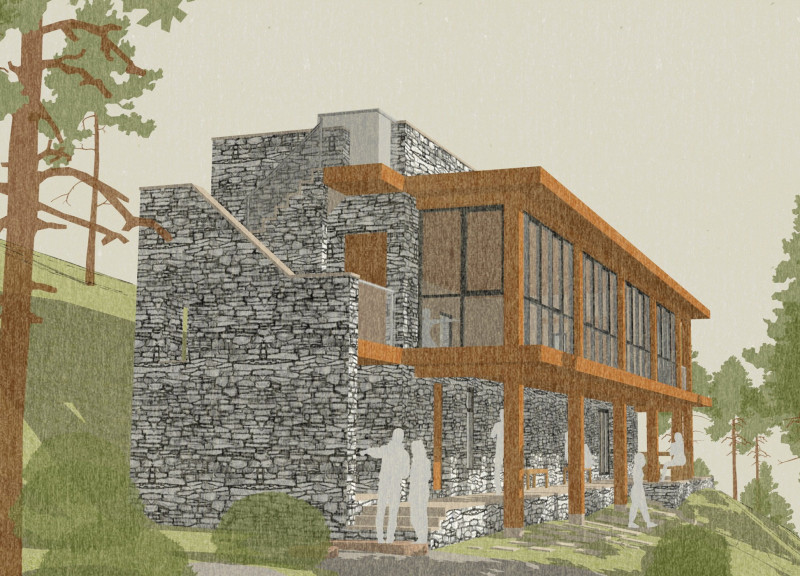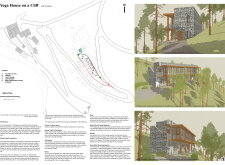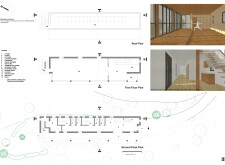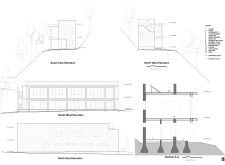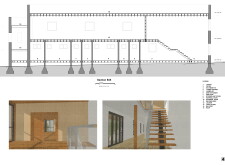5 key facts about this project
The Yoga House on a Cliff in Vale de Moses, Portugal, offers a unique space designed for yoga practice and holistic living. The location is characterized by its beautiful hills and valleys, creating a peaceful environment for visitors. The design seeks to enhance the connection between people and nature, drawing inspiration from traditional Portuguese buildings and their relationship with gardens.
Architectural Concept
A key feature of the design is the Loggia, an open-air area that allows visitors to interact with the garden while being protected from the weather. This space serves as a connection between indoor and outdoor environments. The layout is designed for efficient circulation, making it easy for users to move throughout the building and access various areas intended for yoga and relaxation.
Natural Light and Ventilation
The building’s orientation is important for maximizing natural light and views. Positioned from southeast to northwest, it captures sunlight throughout the day. The yoga studio includes large windows that provide expansive views of the surrounding forest, helping visitors feel connected to the landscape. Each room is equipped with strategically placed windows to encourage fresh air, creating a healthy atmosphere for meditation and yoga practice.
Sustainability Integration
The project emphasizes sustainability. A grey water recycling system handles water from showers and sinks, using bio-filtration methods to support the garden’s irrigation needs. This system reflects a commitment to environmental responsibility. Additionally, rainwater is collected from the roof, further enhancing resource efficiency and showcasing thoughtful design.
Materials and Details
The materials used for construction include stone and timber, both of which blend well with the local environment. The flat roof features solar panels positioned at an angle to capture solar energy effectively. A Zen garden is integrated into the design, with stone flags arranged in a playful checkerboard pattern, encouraging visitors to interact with the space. This detail highlights the harmony between the building and its natural surroundings.


